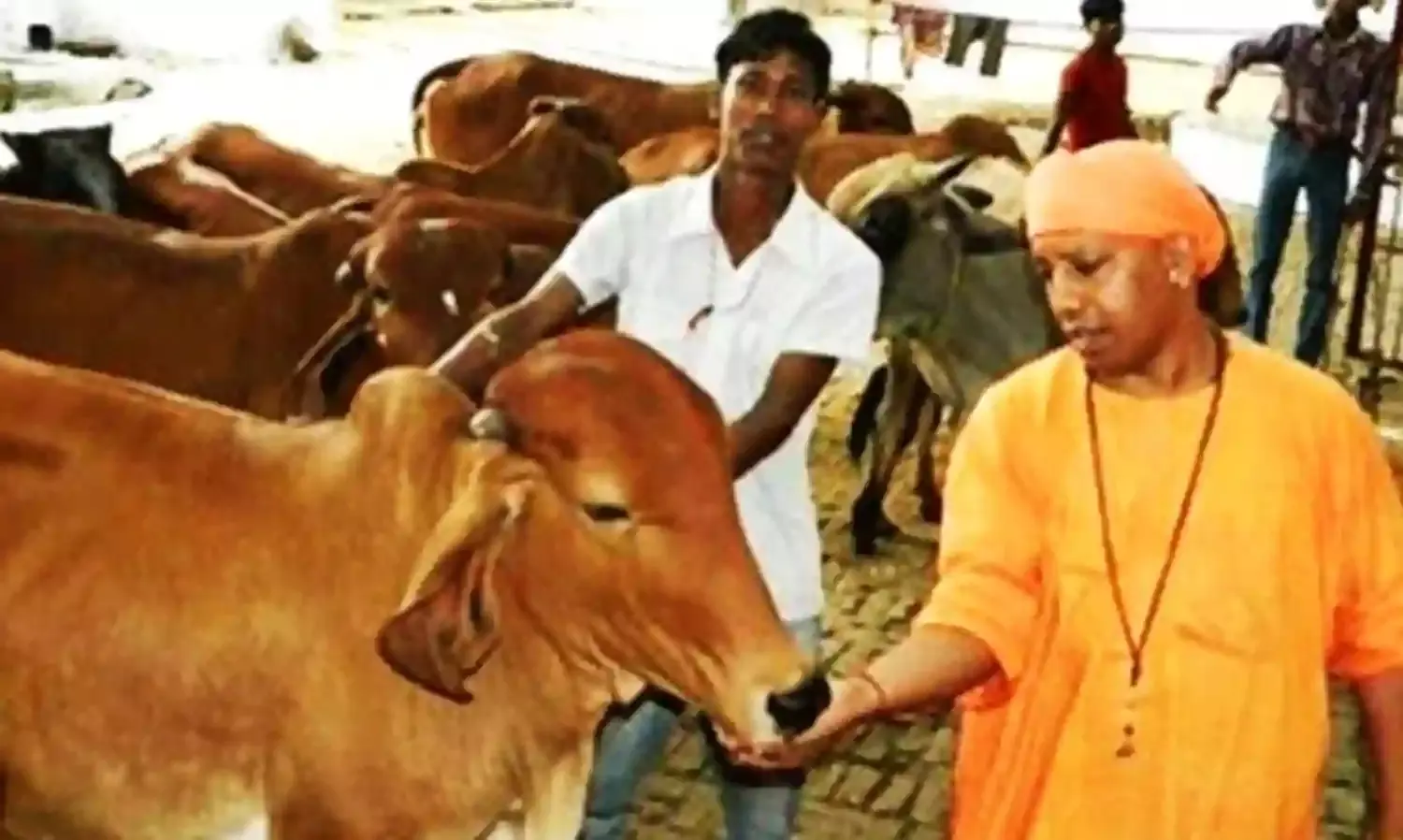Will Cow Politics Derail the BJP Gameplan in Uttar Pradesh?
Ironically, politics around the cow may prove to be the albatross around the BJP's neck

LUCKNOW / ALIGARH: Will politics over the cow ultimately end up damaging the ruling Bharatiya Janata Party's prospects of winning next year’s parliamentary poll in the crucial state of Uttar Pradesh? Holy cow!
The question would have sounded absurd just about a year ago. Today, however, it is fast becoming a factor in raising the hackles of small and marginal farmers, especially in the central and eastern parts of the state.
Last week I travelled extensively by road in the politically hypersensitive triangle in UP’s heartland between Lucknow, Allahabad and Varanasi. This is the same area which has given India four prime ministers – five if one includes Atal Bihari Vajpayee who represented Lucknow in the final phase of his long political career.
Going south from Lucknow along the road to Rae Bareilly and Allahabad, the first thing that strikes you is the many small herds of stray cows littering the national highway. These stray animals have been let loose by farmers unable to feed them after they stopped producing milk, and unable to sell them to cattle traders because of the stringent provisions of cow protection laws, and the fear of lynching by gau rakshaks (cow protectors) while transporting them to urban centres.
The UP police have done their own bit too by paying into the hands of cow vigilantes and lynchers, and looking the other way when such vandals strike in the name of cow protection. In fact in most such incidents the police actually aid and abet the violence indulged in by lynchers without bothering to examine the legality of the transaction.
I spent nearly three days in a village located in this area, between Unchahar and Allahabad. There are stories galore about how marauding herds of stray cows are causing havoc in the fields of small farmers, who are forced to spend almost the entire day and night guarding their farms. For marginal farmers even a night of neglect could mean that almost half their yearly earnings are wiped away in a few hours if a herd of stray cattle invades their field.
The local barber told this writer, “Just about a week ago, one frustrated farmer hired a truck in the late hours of the night, herded these cows across the Ganga ridge and released them in a village that falls in Kausambi district." Such incidents are rampant and are a pointer to the rising rural distress.
If you talk to any villager, cutting across caste lines there are just three things which are the main topic of discussions in small village markets. The sky rocketing prices of fuel, the sharp rise in the price of chemical fertilisers during the past year, and the havoc caused by the near total breakdown of the cattle trade in the state. When I visited the same area last September people were grumbling about these matters, but now the intensity has heightened. Tomorrow it may well become an uproar.
Farmers with small landholdings who almost stoically withstood the hardships caused by demonetisation are now openly venting their anger as their travails continue to mount.
I was amused to hear the name given to the stray cattle by many of the farmers. “This is Yogi’s Fauj (army),” they remark sarcastically.
It would be naïve to downplay the damage done to the local dairy trade by the hamhanded manner in which several states, especially Uttar Pradesh, have indulged in cow politics without considering the fallout on the small farmer, whose entire cash flow chain largely depends on the cow and buffalo which sustain him during their milk producing days and later by the sale price they fetch in the cattle market.
Ironically, the politics around the cow which was supposed to be the flagship movement for the ruling BJP, defining the Yogi government in Uttar Pradesh, could now well prove to be the albatross around its neck.
India's most populous state with 80 seats in Parliament is absolutely vital for Prime Minister Modi's chances of getting a second term. But unless present trends register a dramatic reversal, the cow belt of north Indian states may well pull the rug from under his feet.
Next Story



